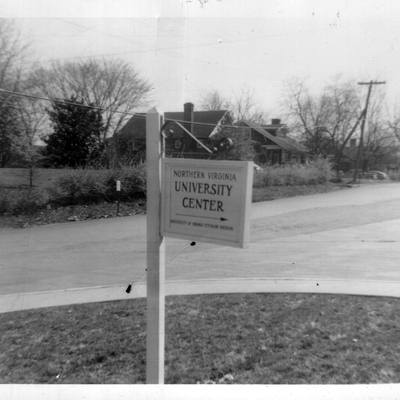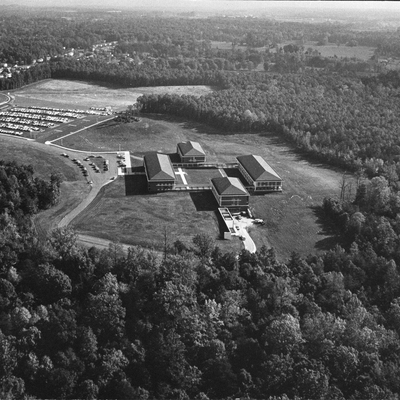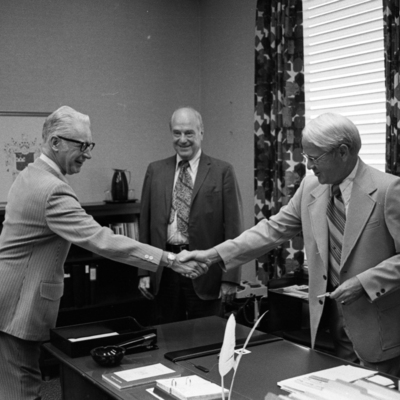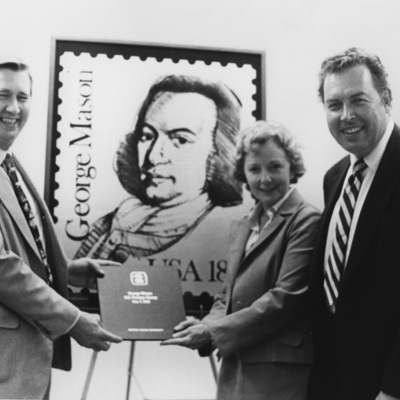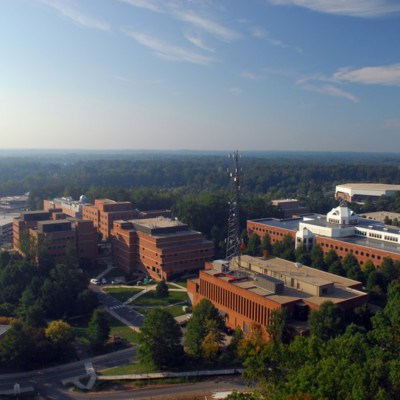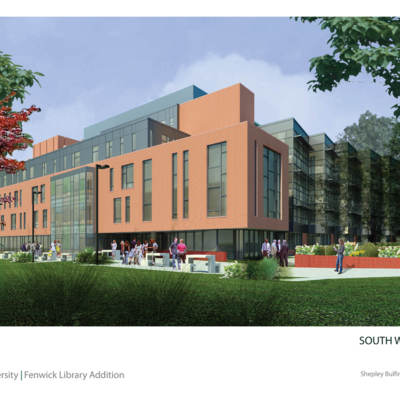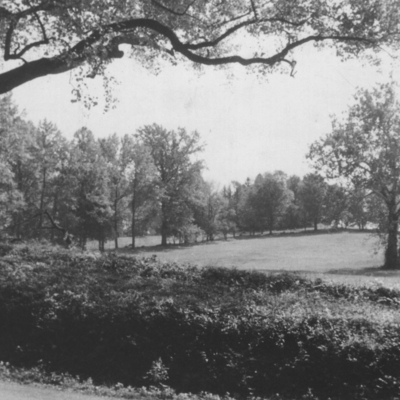The Distributed University
One of the decisions Dr. Alan Merten made within his first week as president of George Mason University was to clarify the status of the University’s three campuses. He disliked their designations as the “Main Campus” (Fairfax), the “Law School Campus” or “Metro Campus” (Arlington), and the Prince William Institute, so shortly after his arrival in early July 1996 he declared that George Mason did not have a “main campus”—it had three campuses that were equal in status though varying in size and development. [1] He believed that different titles sent a bad signal; calling one campus “main” designated the others as remote or satellite campuses. Instead, he preferred to view George Mason as a “distributed university” and became a leading proponent of that vision.
Dr. Merten noted that the idea of a distributed university required “an interesting blend of centralization/decentralization;” campuses share operational systems but have distinct focuses. [2] In 1997, Provost David Potter worked closely with Executive Vice President Randall Edwards to ensure that services provided to students at Arlington and Prince William helped them to feel “fully a part of the University.” Edwards ensured that the Arlington and Prince William campuses received “the same high level of support present on the Fairfax Campus” with the implementation of similar telecommunications, public safety, and administrative services. [3] Potter also noted the importance of determining the academic needs of each campus community and adjusting programs accordingly in order to avoid overlap and to address the demands of the surrounding areas. In 2000, Provost Peter Stearns introduced his Strategic Plan for the Distributed Campus, which called for accelerated development at Prince William and Arlington to create “distinctive centers of excellence appropriate to the distributed campus concept.”[4] Plans for major building programs and enrollment growth at both campuses were to further establish Arlington as George Mason’s center for law, policy, and graduate studies and Prince William as the leader in computational bioscience and computational medicine. The Fairfax campus was to continue to serve as the undergraduate student residential center. [5]
Though Dr. Merten referred to George Mason as a “distributed university” and promoted it as such, he was not the first to use the term. Provost Clara Lovett and Vice Provost for Faculty Affairs and Research Frederick Rossini had produced a paper conceptualizing George Mason as a “distributed university” following meetings of a university planning group called the Urban Village Task Force in 1989. They defined a “distributed university” as “a geographically dispersed institution that is academically, organizationally, and technologically integrated. It will be a network of dispersed nodes for teaching/learning research, each of which is equal to every other node.” They also noted that a distributed university would allow access to a greater number of resources, assure quality, and “enable specialization, experimentation, innovation, and development of educational cluster communities with distinct cultures.”[6] Three years later, a planning committee for the campus at Arlington also affirmed its commitment to that model:
Northern Virginia will be [George Mason’s] ‘campus’, which it will serve through major academic centers and access to business locations and other schools throughout the region. [The Arlington campus] will have world-class programs; [it will] not be a branch campus or extension center. George Mason has a strategy of building the University from the 'top down’, starting with world-class graduate and professional centers. [7]
Though land for each of George Mason’s campuses was acquired differently, all three have a shared goal of drawing upon and contributing to their respective communities. This idea was again expressed in regard to the expansion of the Arlington campus just before Merten’s arrival: “The Arlington Campus is the location of flagship programs developed as centers of excellence to serve Northern Virginia and the Arlington community as an integral part of George Mason’s distributed identity.”[8] The desire to promote excellence and to serve local communities sparked exploration of further expansion in Northern Virginia—a gift of land to George Mason in Loudoun County remains a possible site of future activity. [9] Lovett and Rossini’s vision had suggested that a distributed university would “facilitate the university’s response to externally-generated intellectual and programmatic opportunities.” [10]
Mason did respond to external intellectual and programmatic opportunities, and soon international expansion was at hand; the university partnered with the United Arab Emirates to found a campus at Ras Al Khaimah (RAK). The agreement, chartered in February 2005, was terminated in spring 2009, however. [11] Students enrolled in classes there were allowed to finish the semester and were offered help in transferring to one of Mason’s campuses in Virginia or to another institution of higher learning in the area. Dr. Merten acknowledged that “We made a good decision, but didn’t have a good outcome. We didn’t receive the support we needed from the government. Not just financial support, but support to maintain the academic integrity of our programs.” [12] University Provost Peter Stearns maintained that those same challenges had existed and noted his disappointment that the RAK campus had to close. He believed it to be “in the best interests of the students and the institution,” however, and reiterated that “Mason remains committed to international collaborations.” [13] This is evident in its 1 + 2 + 1 Dual Degree Program with several major universities in China, an exchange program for faculty and students at Moscow State University, and George Mason’s array of study abroad options across all seven continents.
Although the Ras Al Khaimah campus had not been successful, Dr. Merten recognized, “If you don’t have any failures, you’re not trying enough. We backed out. We’re giving them [RAK administrators] advice. We’re going to be involved globally in other places; South Korea is being discussed, among others.” He understood George Mason’s role as a “distributed university” as essential to its mission: “its connections to its environments are what create its life. Being distributed in the United States and doing things in other parts of the world creates excitement.” [14] That excitement, he said, makes the “distributed university great for our programs, our competitive advantage, and our image.” [15]
Update: GMU Korea (now known as Mason Korea) was established in 2014 as part of the Incheon Global Campus, aiming to become the best global education hub in Northeast Asia. George Mason University was invited by the Incheon Free Economic Zone Authority to come to Songdo and participate in an innovative initiative to educate the next generation of global leaders. GMU Korea now offers U.S. degrees in six undergraduate disciplines. Approved by the Korean Ministry of Education, the degree programs offered afford students the unique opportunity to spend three years at GMU Korea in Songdo and one year in the U.S. at Mason in Fairfax, Virginia. When these students graduate, they receive the same degree as all students from George Mason University.
Browse items related to the Distributed University concept.
